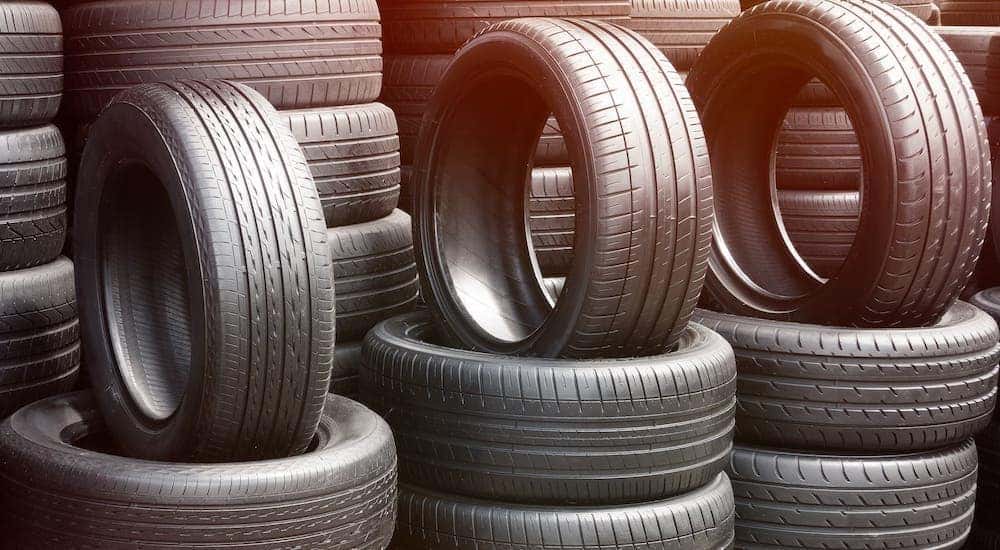Tire Service: Comprehending Tire Stress Surveillance Systems
Understanding Tire Pressure Surveillance Systems (TPMS) is an essential aspect of keeping ideal automobile performance and safety on the road. With advancements in automotive technology, TPMS has actually become a common attribute in modern-day automobiles, giving real-time details on tire stress levels.

Value of TPMS
The significance of Tire Stress Tracking Equipments (TPMS) hinges on their capability to boost car security and efficiency via real-time surveillance of tire pressure levels. Keeping the proper tire pressure is crucial for making sure optimum handling, braking, and total safety of a car. TPMS offers chauffeurs with prompt feedback on any overinflated or underinflated tires, permitting prompt modifications to be made.
Components of TPMS
Sensors are commonly located in the tire shutoff stem or connected to the wheel assembly, where they measure tire pressure and transfer information to the control module. Some progressed TPMS designs likewise present the actual tire pressure readings for each tire, supplying drivers with real-time information to ensure optimum tire efficiency and security. By checking tire pressure constantly, TPMS helps prevent crashes, lowers tire wear, and boosts fuel efficiency, making it an important element for car security and efficiency. tire shop morris.
Kinds Of TPMS

On the various other hand, indirect TPMS depends on the automobile's wheel speed sensing units to keep an eye on tire pressure. This system finds underinflation by contrasting the rotational rates of the wheels. Indirect TPMS is much less costly than straight TPMS, as it uses existing sensors within the vehicle.
While direct TPMS provides extra precise readings, indirect TPMS is simpler in layout and generally needs less upkeep. Both systems have their advantages and constraints, and the choice between them commonly depends on elements such as expense, car make, and individual preference. Recognizing the distinctions in between these 2 kinds of TPMS can aid automobile owners make informed choices relating to tire upkeep and safety.
TPMS Maintenance Tips
Effective maintenance of TPMS is essential for making sure ideal efficiency and safety and security of your automobile. Routinely examining the TPMS sensing units for any kind of damages or corrosion is important. Make sure that the sensors are clean and totally free from debris that could interfere with their functioning. Additionally, it is recommended to check the sensing unit batteries occasionally and replace them as needed to assure precise readings. Conduct routine look at the tire stress levels and compare them with the TPMS readings to ensure they correspond. If there are any inconsistencies, recalibrate the system following the producer's standards. Throughout tire rotation or his response substitute, make certain that the TPMS elements are dealt with thoroughly to protect against any type of potential damages. Lastly, if the TPMS cautioning light brightens on the control panel, address the problem promptly by inspecting the tire pressures and the overall system for any faults. By sticking to these maintenance ideas, you can lengthen the life-span of your TPMS and improve the security of your driving experience.
Advantages of Correct Tire Pressure
Preserving correct tire pressure, as highlighted in TPMS Maintenance Tips, is crucial for gaining the countless advantages associated with optimal tire pressure levels. In addition, correct tire pressure guarantees even tire wear, prolonging the life-span of the tires and advertising more secure driving problems. In verdict, the benefits of appropriate tire stress go beyond simply tire long life; they include enhanced fuel efficiency, enhanced security, better automobile efficiency, and overall driving comfort.
Verdict
In verdict, comprehending tire stress surveillance systems (TPMS) is crucial for keeping ideal tire stress and guaranteeing car security. By recognizing the importance of TPMS, recognizing with its elements, understanding the various kinds offered, adhering see this here to correct maintenance tips, and realizing the benefits of preserving appropriate tire pressure, his comment is here drivers can improve their driving experience and extend the life expectancy of their tires. Appropriate tire stress is key to safe and reliable car procedure.
